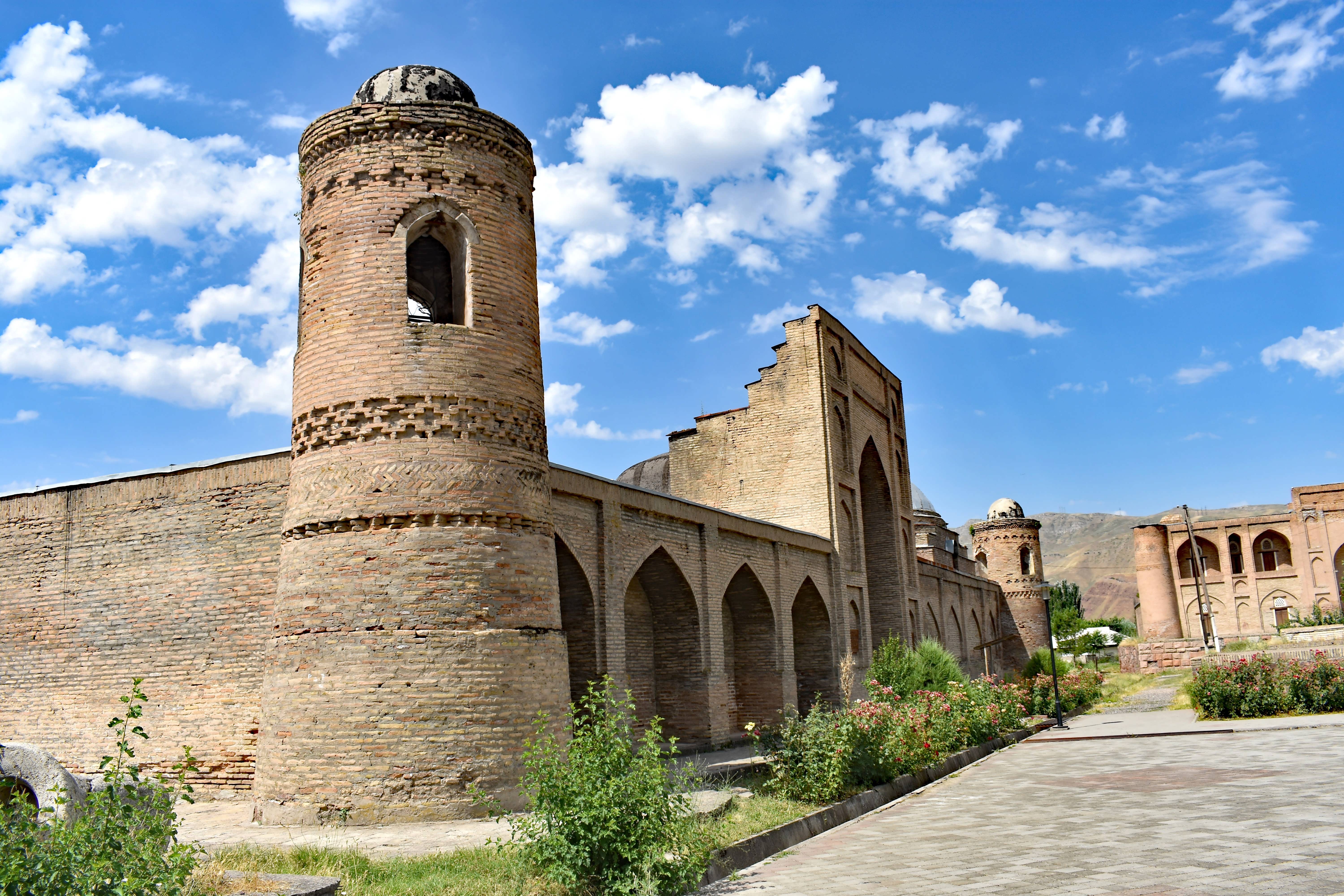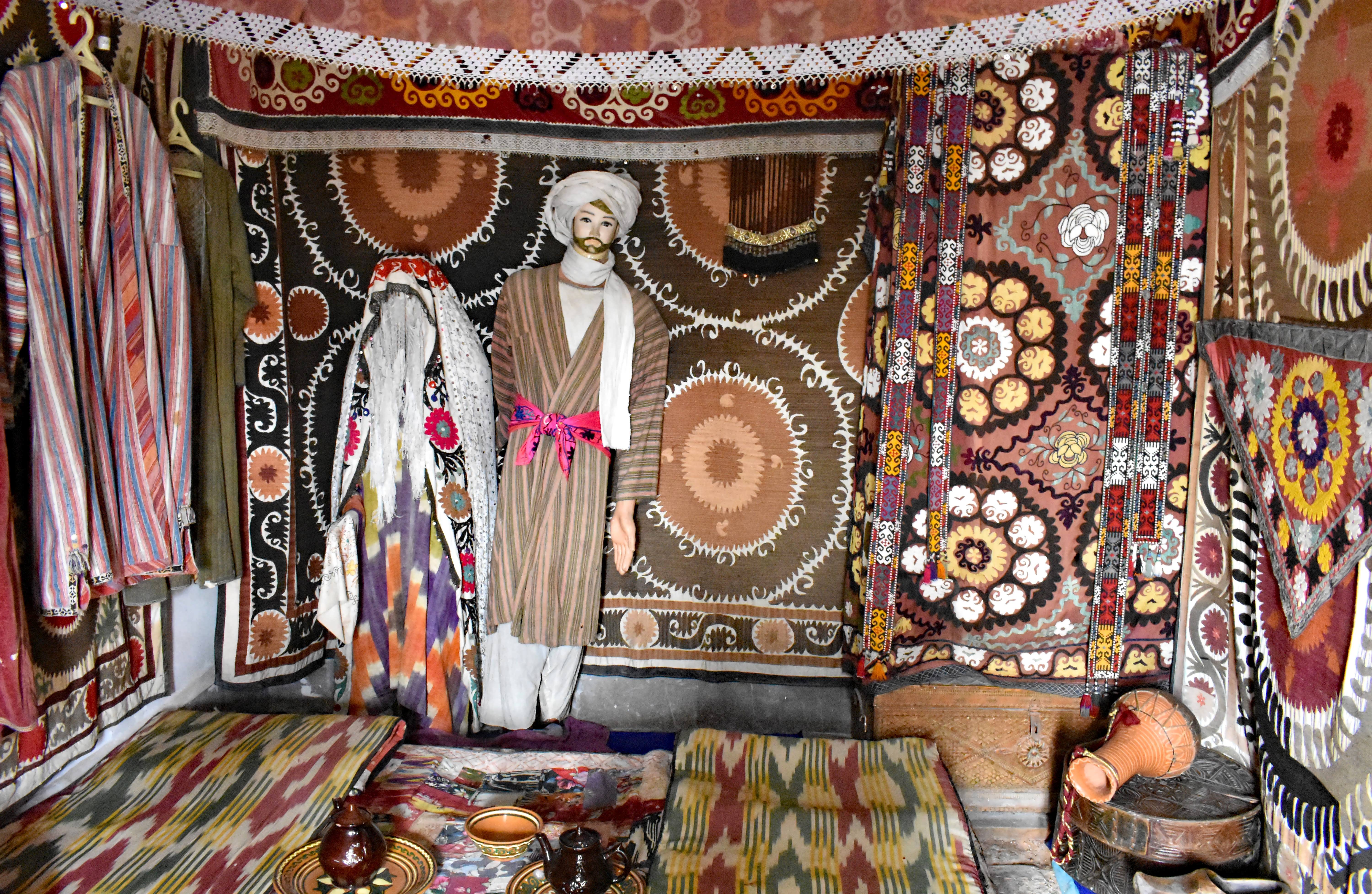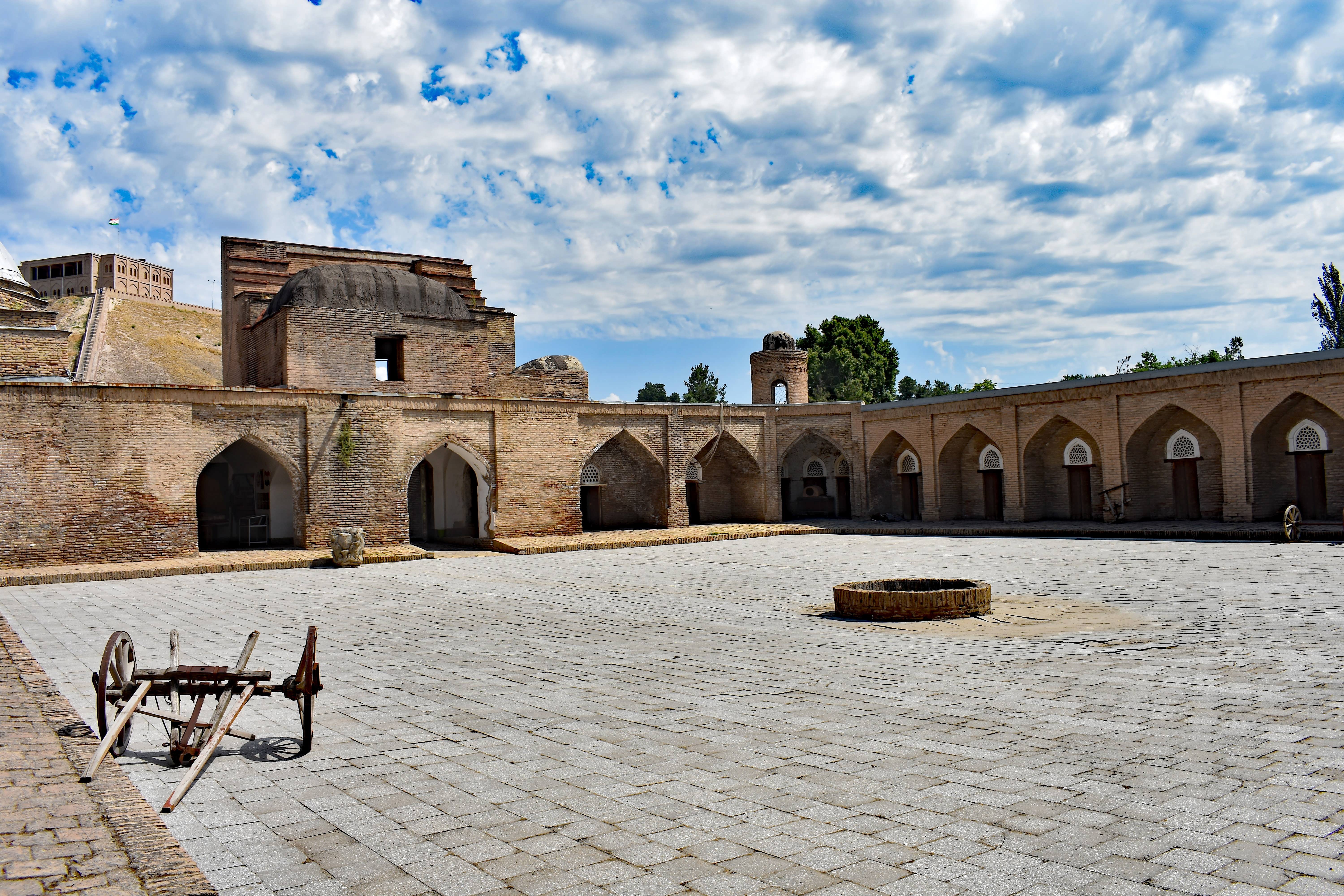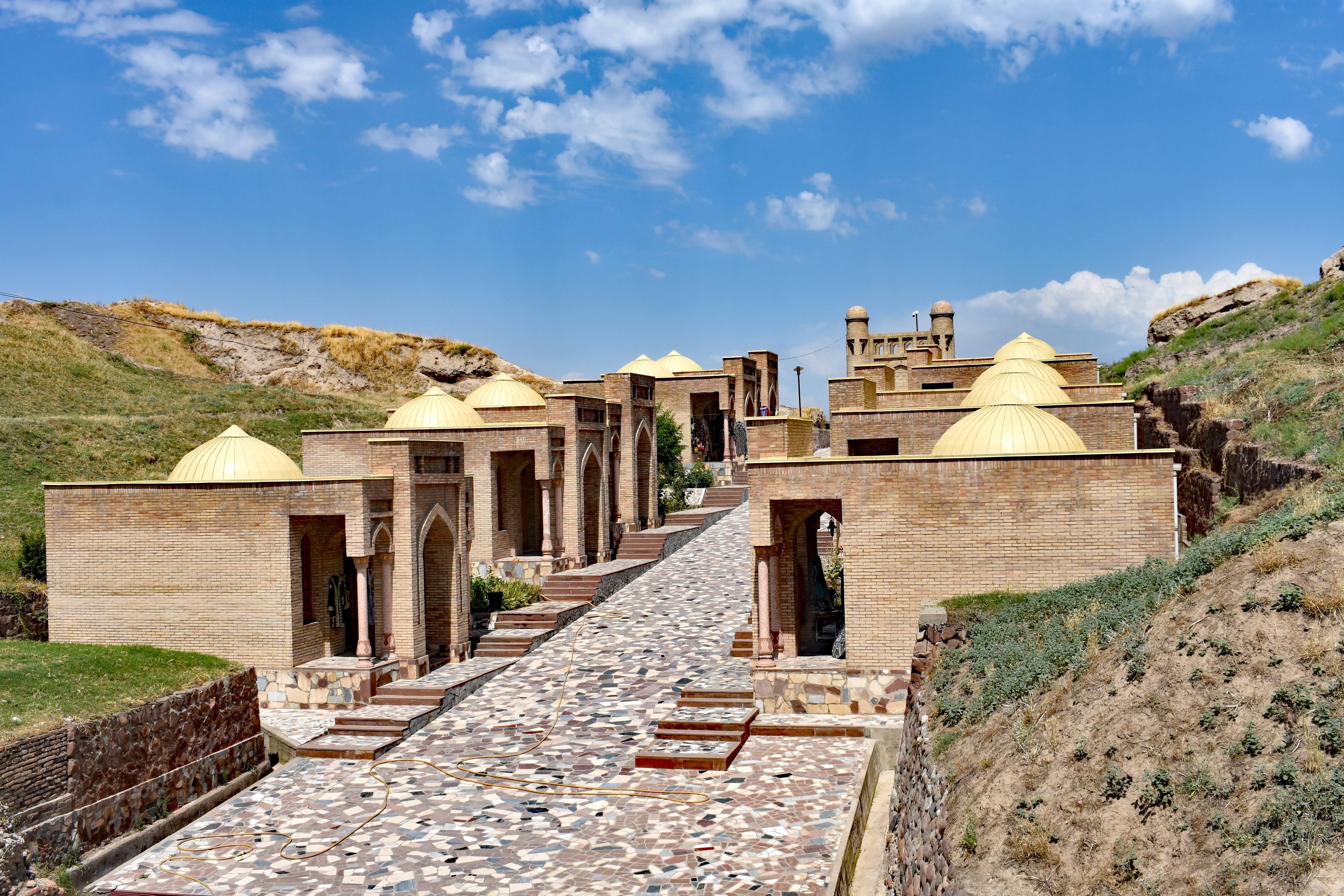‘Mostly a cultural destination, but it also offers horse riding for children’. This was all Lonely Planet could muster about Hissar Fort, also confusingly known as Hisor and Gissar, and so our expectations weren’t high.
We had a pleasant 30-minute drive from Dushanbe through the Hissar Valley noted for its cherries. On arrival, we began at a map of the site with several numbered features and our guide pointed out the ones we’d be visiting.
The fort is one of the best preserved historical sites in Tajikistan and was strategically built on a hilltop around 2,500 years ago. However, having seen many changes in power, it has been demolished and rebuilt numerous times.
We began in the old madrassa now converted into a small museum which told us more about Tajikistan and using a table-top relief map, our guide pointed out both where we had been, and where we had still to visit. There was the usual coins, pottery fragments with lots of patriotic information and photographs about the gaining of independence in 1991.
The square open courtyard had the student rooms around the perimeter: one depicted the room of a rich student, which had a raised bed and would have housed three students, whilst another showed how poor students would have slept on the floor and been more tightly packed in. Other rooms had displays of the currency, the types of clothing worn, wall hangings and rugs.
A new madrassa at the side of the old one was not open to visitors.
There was also the remains of a caravanserai, where Silk Road traders would usually have stabled their animals on the ground floor and slept above. However, in this one, the people would have stayed on the ground floor with the animals being housed elsewhere. There was also an empty space which would have been used for washing.
Across the square, were two partly restored pillars and the main arched gateway dating back to the 16th century, although it has had multiple renovations. A path led up a slope lined with souvenir shops to a second, modern-day arch complete with security camera. Behind this was a field and open land with the horses which Lonely Planet had referred to.
High above was the citadel which we thought we were going to have to hike up to, so it was a great relief when our guide suggested an ice cream before we went back down. However, before we exited the arch, we climbed a short flight of steps to access the restored fortress walls for a view of the square and complex.
The whole area was beautifully maintained with lots of gardens, lawns, small bushes and benches, and despite Lonely Planet not rating it highly, we did, and felt it was well worth the drive out of town.












